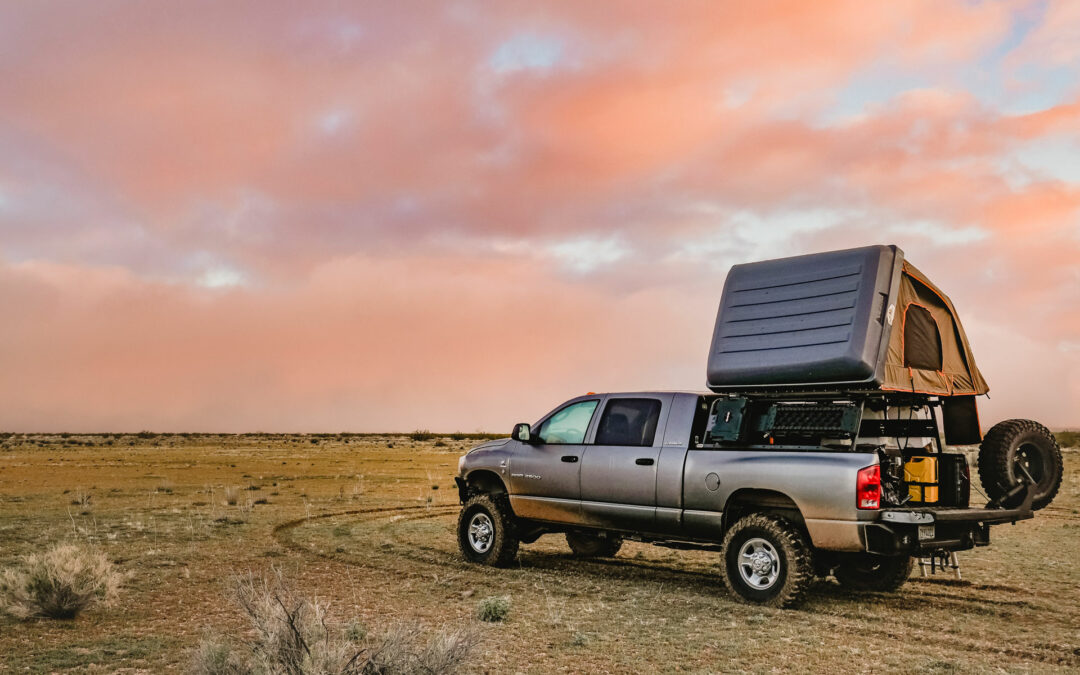Photo courtesy of Brett Siegel //
Summer is upon us in the northern hemisphere. We are days away from the official start of summertime, and what better time than NOW to cue up and plan for your next adventure outdoors?
Here are five critical planning steps for those who are just now starting to stretch their legs and set their sights beyond familiar horizons.
Adventure is calling. Let’s get to it.
Do research by identifying a basic area on the map that you know is awesome – national and state parks, mountain range, national forest, etc. And then move your attention outward from that popular spot. There are a ton of phenomenally and ridiculously beautiful sites just outside the main natural attractions that most people come to see. If you have a 4×4 vehicle, even better. You can access those off-the-beaten-path places just outside of heavily trafficked zones.
How do you know you’re actually allowed to be THAT far off the path? First, ensure that you being there with your vehicle adheres to proper land use guidelines. Second, confirm that you’ve got your sights set on public (in the United States, BLM land) and not someone’s private property. The US Forest Service has fantastic maps that will help you with identifying land that you’re cool to explore.
Pro tip about these maps: Just because you see a road, doesn’t mean that it’s open (at that point in the season) or that it’s maintained. Research in advance!
Just one of many maps available to download from the US Forest Service.
A major concern for most people traveling off the beaten path is connectivity for both navigation and comms. While a globally accessible WiFi solution is on the immediate horizon, as of June 2020, travelers should prepare as if they will not have reception for long stretches of time.
Be sure to download all relevant map data to your mapping app of your choice for the region you are traveling to BEFORE leaving on your trip.
One solution to digitally ‘know before you go’ is to download a GPX file of an awesome trail/track from the Overland Bound Forum. Import that file to Google Earth, view on your desktop and edit until you’ve got the perfect route. Use Google Earth to 3D model your track. Go to sleep content. You can check out this video on using Google Earth to plan your route from the video archives.No matter how short or long your trips is, you need to do a full vehicle once over before pointing the wheels to the proverbial hills. You’re good to go with a 5 point inspection of your rig. Check these systems:
Lights and indicators including connections for any extra lights on your rig
Check your tire tread and look for any chips, cracks, gashes from your last outing
A good ol’ pedal pump test for brakes and check your fluids of course
Check your belts, hoses and fluid levels. And remember to bring extra of all of the above with you.
Electrical system. Keep extra fuses handy.
Got your sights set on a long trip or planning on hitting up rough terrain? Do all of that and consider taking your rig to your local shop for a thorough inspection. Ask yourself this: Based on where I’ve decided to go after completing planning step #1, do I need to add any gear? Do I need to remove gear?
We’ve been focused on assessing current items in all of our gear categories. This probably differs slightly for everyone but we break out gear into six categories:
Food, water & kitchen
Shelter & clothing
Camp basics
Vehicle & tools
GPS comms & electronics
First aid & emergency
For each of these categories, we consider what new items and what item upgrades might improve or next trip.
When considering your needs for gear, check your home first. A solution for your kitchen or camp set up might already be in your possession. If you don’t have anything that will work in your possession, then you’ll have an even better idea of the exact item you need to purchase. Need a cheat sheet? Here’s our gear checklist.
By the way, gear inspection also includes deep cleaning all your stuff, which, let’s be real, is always a good idea.Good news! We wrote all of this down! And now we use the Overland Bound Trip Planner to plan, document and assess every trip we take. Check it out! It’s a free resource that we find valuable not just for planning the upcoming adventure but for improving the planning process for the one after that!
As always, wherever you decide to go, make sure to travel safely and follow the Tread Lightly principles. Better yet, head over to Tread Lightly! and take their 101 online course. It’s free and easy, and it will make you part of the long term solution to ensure proper land use and accessibility for generations to come.

